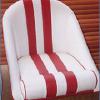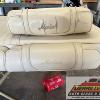Boat Upholstery boat seat repair
custom boat upholstery
boat foam repair
Cedar Lake, IN (46303) - Crown Point, IN (46307, 46308) - Dyer, IN (46311) - East Chicago, IN (46312) - Gary, IN (46402,46403,46404,40405,46406,46407,46408,46409)-Griffith, IN (46319) - Hammond, IN (46320, 46323, 46324, 46325, 46327) - Munster, IN (46321) - Highland, IN (46322) - Hobart, IN (46342) - Lowell, IN (46356) - Saint John, IN (46373) - Schererville, IN (46375) - Whiting, IN (46394) - Gary, IN (46401, 46402, 46403, 46404, 46406, 46407, 46408, 46409) - Lake Station, IN (46405) - Merrillville, IN (46410, 46411), Portage, IN (46368) - Valparaiso, IN (46383, 46385)
<!-- Google tag (gtag.js) -->
<script async src="https://www.googletagmanager.com/gtag/js?id=UA-23768512-1"></script>
<script>
window.dataLayer = window.dataLayer || [];
function gtag(){dataLayer.push(arguments);}
gtag('js', new Date());
gtag('config', 'UA-23768512-1');
</script>
646f5fabea6d462da1dc61646d9fce3d
Merrillville Auto Glass & Trim is a reputable company know for providing high-quality boat upholster services, Here are a few reasons to choose us for your boat upholstery.
1. Expertise: Merrillville Auto Glass & Trim has a team of skilled technicians with years of experience in working with upholstery for your boats and other vehicles. Their expertise ensures that your motorcycle upholstery will be done with precision and care.
2.Quality materials: Merrillville Auto Glass & Trim sources and uses only the best quality materials for your boat upholstery projects. This ensures that your motorcycle seats are not only durable and long-lasting but also comfortable and stylish.
3: Customization options: Merrillville Auto Glass & Trim offers customization options for your boat upholstery, allowing you to personalize your bike to your preferences. Whether you want a specific color, design or material, we can work with you to create a unique look for your boat.
4 Customer Service: Merrillville Auto Glass & Trim prides itself on providing excellent customer service. Our team is friendly, knowledgeable, and dedicated to ensuring your satisfaction with our work
5. Competitive pricing: Despite Our high-quality materials and expertise, Merrillville Auto glass & Trim offers our boat upholstery services at competitive prices. This makes our services accessible to a wide rant of customers with different budge levels
Overall, choosing Merrillville Auto Glass & Trim for your boat upholstery needs can provided you with a professional and reliable service that will enhance the look and comfort of your boat
8606 Mississippi Street
Merrillville IN 46410
(219) 769-1905
9:00 am to 5pm Monday - Thursday
Friday 9:00am - 4:00pm
Closed: Saturday & Sunday
Care and maintenance of your boat covers and upholstery
Your new custom canvas product is important after the initial purchase. You purchased the very best custom made top or enclosure, now you need to maintain that pride of ownership for years to come.
Boat Canvas
Your canvas should be washed at least once a year. You can wash it with a gentle detergent and a brush (rinse thoroughly). Also, you can wash it in a full size washing machine ( available at some laundry mats) Here in Merrillville - the one at 61St and Harrison has a super capacity washer . Air dry only. Canvas can not be put in dryer. It will shrink and/or burn. Poles may have to be adjusted since canvas will stretch and shrink over time.
Boat Windows
Windows should be cleaned and polished regularly with a soft cloth. You can use any of the products designed for this, available at your local marine supply store. We recommend plastic polish . which we have in stock. Furniture polish is not recommended since it can build up a residue.
Boat Zippers
Zippers should be cleaned with a brush, and then a silicone spray should be applied. Be careful to not get it on the windows. Do not use the "stick" kind of lubricant. It leaves behind a residue that makes it difficult to operate the zipper. Bar soap can be added to ease in operation.
Boat Fasteners
Fasteners should be lubricated regularly both on the boat and on the canvas. Any type of clear lubrication is fine. Grease should not be used as it will discolor the canvas. Some fasteners should be replaced if they have seen signs of wear.
Boat Storage
It is always advisable to clean your canvas and windows before storage. They must be perfectly dry before storing.
Tarps should not be put on over canvas. Windy conditions can cause them to rub through the canvas, causing rips and holes, and costly repairs.
Canvas can be folded; windows cannot. Windows should be stored either lying flat with sheets or towels in between them or rolled up in a protective tube.
Boat Traveling Covers
Only covers specifically designed for on-the-road travel, should be used while Traveling. You should never trailer a boat with the enclosure or bimini top up. The high rate of wind speed can destroy them. If they do survive the trip, the dirt and grime will have scratched the glass or soiled the canvas.
Also, accidents can happen. If your top flies off, it could blind another driver!
Even covers that are designed for travel need to be cared for correctly. Do not use straps across the cover. The straps can cause chaffing, and ultimately, rip through the cover. Inflatable balls and intertube can be placed under cover making air and water flow off the cover better.
Never put a tarp or Never put a tarp or plastic over a cover for storage. While it is okay to put a plastic tart over thing over a cover for storage. While it is okay to put a plastic tart over things while you are painting your house, or under a pine tree dripping. Plastic do not breathe and traps the moisture.
Mildews & Do nots
Do recognize when mildew and mold appear on your fabrics
Don’t ignore it; mold and mildew won’t go away by themselves
Do have your items cleaned, or clean them yourself
Don’t hesitate to call on us with your questions or concerns
Mildew and mold, which are classified as fungi, are simple microscopic organisms that can thrive anywhere in a warm, moist environment. Mildew refers to a surface fungi, usually appearing as powdery, patches of grey or white. Mold looks fuzzy or slimy, and comes in various colors.
Once it appears on your outdoor fabrics, it must be removed or it can cause fabric decomposition and an unhealthy condition. It’s also unsightly! Soil provides the food for this unwanted growth. That’s why we recommend regular fabric cleaning, and storing of items in a dry, well-ventilated area.
Lichens are organisms consisting of fungus and green algae, growing together in a symbiotic relationship. When organic particles such as pollen settle onto the surface of trees or rocks, for example, under the right conditions they can grow into green algae. Add air- or water-borne fungus microorganisms such as mold, and you have a recipe for lichens can grow on outdoor fabrics too, as it appears on these awnings, if not regularly maintained. Extra care must be taken to clean items covered with lichen, but we are equal to the task!



